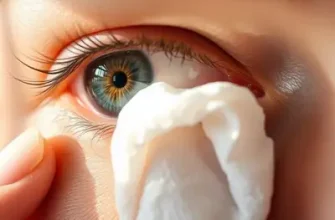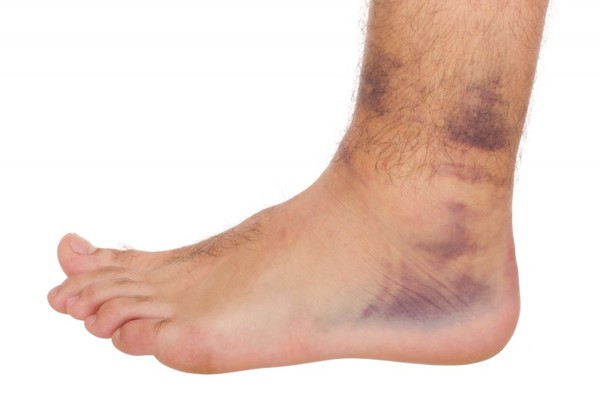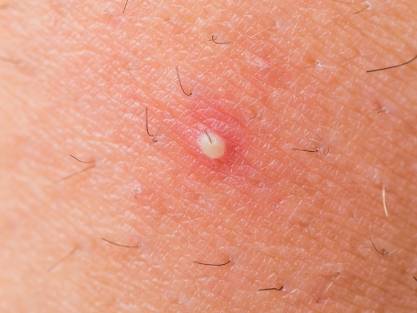White spots on the skin, medically known as hypopigmentation, can range from tiny dots to large patches. These discolorations are usually painless but can be a cosmetic concern or indicate underlying health conditions.
Most Common Causes of White Spots on Skin (Dermatological Survey 2024)
This horizontal bar chart visualizes the most common dermatological causes of white spots on skin, based on a 2024 survey. Vitiligo leads with a significant margin, followed by Tinea Versicolor and Pityriasis Alba. Less common causes include idiopathic and nutritional-related hypopigmentation.
Common Causes of White Spots
1. Vitiligo
A chronic autoimmune disorder where the immune system attacks melanocytes (pigment-producing cells), resulting in loss of skin pigment.
- Prevalence: Affects about 1% of the global population.
- Appearance: Irregular, sharply defined white patches that often begin on the hands, face, or around body openings.
- Symptoms: Generally asymptomatic (no pain or itch), but some patients report mild itching or increased sensitivity to sunlight. Often symmetrical in distribution.
- Progression: May remain stable or spread over time. Emotional stress can trigger or worsen it.
- Who’s at risk?: People with family history of autoimmune diseases, thyroid disorders, or type 1 diabetes.
2. Tinea Versicolor
A fungal skin infection caused by the overgrowth of Malassezia yeast, which is normally found on human skin.
- Prevalence: Particularly common in warm, humid climates and among teens and young adults.
- Symptoms: Discolored patches that may appear white, pink, tan, or brown; slightly scaly surface with mild itchiness.
- Distribution: Typically affects the chest, back, neck, and upper arms.
- Seasonality: Tends to worsen in summer due to increased sweating.
- Who’s at risk?: Those with oily skin, people who sweat heavily, and individuals with weakened immune systems.
Most Prevalent Fungal Infections Causing White Spots (Tinea Versicolor Cases)
| Fungal Species | Prevalence (%) |
|---|---|
| Malassezia globosa | 45% |
| Malassezia furfur | 40% |
| Malassezia sympodialis | 15% |
This table highlights the prevalence of fungal species responsible for Tinea Versicolor-related white spots. Malassezia globosa is the most commonly associated pathogen, followed closely by Malassezia furfur. Malassezia sympodialis appears significantly less frequently.
3. Pityriasis Alba
A common skin condition, particularly in children and adolescents, often considered a mild form of eczema.
- Appearance: Round or oval-shaped light patches, usually 0.5–2 inches in diameter, with fine scaling.
- Location: Most commonly affects the face (cheeks), but can also appear on the neck, shoulders, or upper arms.
- Symptoms: May cause mild itching or dryness, especially in winter or after sun exposure.
- Course: Often resolves spontaneously within a few months but can recur.
- Who’s at risk?: Children with dry skin or a history of atopic dermatitis.
4. Idiopathic Guttate Hypomelanosis
A benign skin condition characterized by small, round or oval white macules.
- Demographics: Primarily seen in adults over 40 years old, especially women.
- Features: Flat white spots, 2–5 mm in diameter, with smooth edges; usually on sun-exposed areas like forearms and shins.
- Symptoms: Asymptomatic—no itching, burning, or scaling.
- Progression: Lesions tend to remain stable but may increase in number with age.
- Cause: Chronic sun exposure leading to localized loss of melanocytes.
- Who’s at risk?: Fair-skinned individuals and frequent sunbathers or outdoor workers.
Could It Be Something Serious?
In rare cases, white spots may be more than a cosmetic concern. While most are harmless, persistent or spreading discoloration can occasionally indicate more serious issues like autoimmune diseases (e.g., lupus), nutritional deficiencies, or genetic disorders.
If your white spots are accompanied by other symptoms like joint pain, fatigue, or recurring infections—or if they change in shape or size—it’s best to consult a dermatologist. Early intervention can prevent complications.
A 2022 study published in JAMA Dermatology highlighted that white skin patches, though usually benign, should not be dismissed outright—especially if they’re resistant to over-the-counter treatments or appear suddenly in adults.
Stay aware, but don’t panic. When in doubt, get it checked.
Diagnostic Methods
Accurate diagnosis is key to effective treatment. Here’s a breakdown of modern diagnostic tools:
| Diagnostic Tool | Description | Accuracy (1–10) | Avg. Cost (USD) |
|---|---|---|---|
| Wood’s Lamp Exam | Uses UV light to highlight fungal or pigmentary changes. | 7.5 | $50–$100 |
| Skin Biopsy | Microscopic examination of a skin sample. | 9.5 | $150–$400 |
| Dermoscopy | Magnified imaging to examine skin surface structures. | 8.5 | $100–$250 |
| Blood Tests | Identifies autoimmune conditions or vitamin deficiencies. | 9.0 | $100–$300 |
A male, 34, from Dallas, Texas, noticed white spots on his upper arms. After a Wood’s lamp exam and blood work, he was diagnosed with early vitiligo and a vitamin B12 deficiency.

Latest Treatment Options
Modern treatments are more targeted and effective than ever before:
Topical Corticosteroids
Used primarily for conditions like vitiligo and pityriasis alba, these include medications such as hydrocortisone, clobetasol, and mometasone.
- How it works: Reduces local immune activity and inflammation.
- Effectiveness: 60–70% repigmentation in early-stage vitiligo.
- Best suited for: Mild to moderate vitiligo, children with pityriasis alba.
- Cost: $30–$120/month depending on formulation and insurance coverage.
Antifungal Creams
These are the go-to for treating tinea versicolor.
- Common meds: Clotrimazole, ketoconazole, terbinafine.
- How it works: Kills Malassezia yeast that disrupts skin pigmentation.
- Effectiveness: 90% clearance in 2–4 weeks with topical use.
- Cost: $10–$50 for a 2–4 week treatment course.
Phototherapy (NB-UVB)
Narrowband ultraviolet B therapy is a standard in vitiligo management.
- How it works: Stimulates melanocyte activity and repigmentation.
- Success rate: 70–80% repigmentation in consistent users.
- Best for: Patients with widespread or rapidly progressing vitiligo.
- Treatment course: 2–3 sessions/week for 3–6 months.
- Cost: $100–$200 per session; total treatment may cost $2,000–$5,000.
Excimer Laser (308 nm)
A more focused form of NB-UVB used for small, resistant patches.
- How it works: Targets specific lesions with controlled UV exposure.
- Effectiveness: Up to 85% repigmentation in localized areas.
- Ideal for: Facial lesions, children, or hard-to-reach areas.
- Cost: $200–$500 per session.
Microneedling + PRP (Platelet-Rich Plasma)
An emerging aesthetic treatment especially for hypopigmented scars.
- How it works: Microneedles create micro-injuries to stimulate healing; PRP accelerates pigment restoration.
- Efficacy: Early studies show 50–70% improvement after 3–5 sessions.
- Candidates: Post-inflammatory hypopigmentation, stable vitiligo.
- Cost: $250–$600 per session.
Supplementation
Used to address deficiencies related to pigment loss, especially in autoimmune conditions.
- Key supplements: Vitamin B12, D3, folic acid, and copper.
- Role: Supports melanocyte function and immune balance.
- Effectiveness: Most effective when combined with other therapies.
- Cost: $20–$60/month depending on the regimen.
What Not to Do
- Don’t self-diagnose based on online photos.
- Avoid harsh scrubbing, which can worsen scaling.
- Skip unproven “natural” remedies—these often do more harm than good.
Everyday Prevention Tips
- Use SPF 30+ sunscreen daily: Sunscreen protects the skin from harmful UV rays that can trigger or worsen hypopigmentation. Especially effective for those with vitiligo, idiopathic guttate hypomelanosis, or sun-sensitive skin types (Fitzpatrick I–III). Less essential for those who stay indoors or live in low-UV environments, but still recommended.
- Moisturize regularly to avoid skin dryness: Dry skin can make white spots more visible and exacerbate underlying issues like pityriasis alba. Look for moisturizers with ceramides or hyaluronic acid. Most beneficial for children, teens, and those with eczema-prone skin. Frequency: twice daily for best results.
- Wear breathable, cotton clothing: Cotton allows air flow and reduces friction on sensitive skin, preventing flare-ups of tinea versicolor or irritation in vitiligo. Best for those in humid climates or who perspire heavily. Avoid synthetic fabrics that trap moisture.
- Seek shade during peak sun hours (10 a.m. – 4 p.m.): UV exposure during these hours can worsen pigment loss and trigger flare-ups. Especially important for individuals with autoimmune-linked skin conditions or fair skin types. Combine with hat and sunglasses for full protection. Suitable for everyone, but particularly effective for outdoor workers or beachgoers.
Editorial Advice
Reyus Mammadli, healthcare advisor, recommends seeing a dermatologist if white spots persist beyond two weeks or change in shape or size. “Catching skin disorders early means better outcomes and more treatment choices,” says Mammadli.
Distribution of White Spot Cases by Body Area (Dermatology Clinics 2024)
This chart presents the distribution of white spot cases across various body areas based on data from dermatology clinics in 2024. The face is the most commonly affected region, followed by the back and arms, while legs and chest show fewer cases.
The editorial team also advises opting for combination treatments like phototherapy plus topical medication for stubborn cases. Regular follow-ups and vitamin level checks should be part of your skincare routine if you’re prone to hypopigmentation.
References
- American Academy of Dermatology Association (AAD)
Vitiligo: Diagnosis and treatment.
https://www.aad.org/public/diseases/a-z/vitiligo-treatment - Mayo Clinic
Tinea Versicolor – Symptoms & Causes.
https://www.mayoclinic.org/diseases-conditions/tinea-versicolor/symptoms-causes/syc-20378378 - Cleveland Clinic
Pityriasis Alba.
https://my.clevelandclinic.org/health/diseases/21772-pityriasis-alba - DermNet NZ
Idiopathic Guttate Hypomelanosis.
https://dermnetnz.org/topics/idiopathic-guttate-hypomelanosis - JAMA Dermatology
Case Study: Cutaneous Lupus Mimicking Vitiligo.
https://jamanetwork.com/journals/jamadermatology - National Institutes of Health (NIH)
Tuberous Sclerosis Complex Overview.
https://www.ninds.nih.gov/health-information/disorders/tuberous-sclerosis-complex - PubMed Central (PMC)
Phototherapy in Vitiligo: NB-UVB and Excimer Laser Outcomes.
https://www.ncbi.nlm.nih.gov/pmc/articles/PMC5843354/ - UpToDate
Clinical features and diagnosis of hypopigmented skin lesions.
https://www.uptodate.com/contents/hypopigmented-skin-lesions - Harvard Health Publishing
Vitamin B12 Deficiency and the Skin.
https://www.health.harvard.edu/blog/vitamin-b12-deficiency-2019073017414 - National Eczema Association
Pityriasis Alba – Eczema Spectrum.
https://nationaleczema.org/eczema/types-of-eczema/pityriasis-alba/








